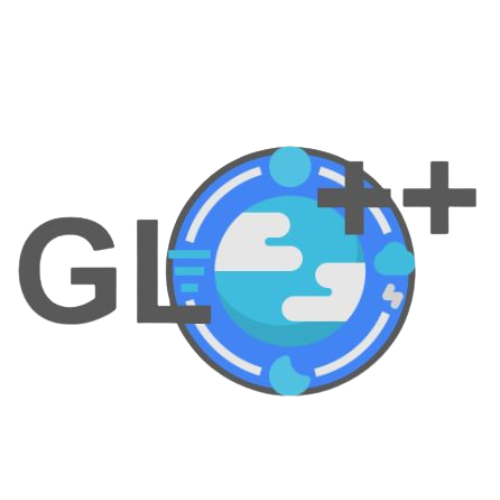
A significant advancement in global meteorological modeling
PNRR – Bando a Cascata SPOKE 4 – “Earth & Climate” del Centro Nazionale (CN) ICSC (HPC, Big Data e Quantum Computing)
Global Meteorological Models | Advanced C++ | Innovative Parallelization
The project “GLObal Weather model Prototype now and Production in the Future” (GLOWPP), is aimed at the design and implementation of a demonstrative prototype of a global meteorological model starting from the solid experience of the GLOBO model developed by ‘ISAC-CNR as an evolution of BOLAM (BOlogna Limited-Area Model).
Leveraging the previous design experiences of the proposing research team, GLOWPP will be characterized as follows:
- parallel, hierarchical, and heterogeneous solver (CPU/GPU) with dynamic load balancing;
- predisposition for nesting functionality;
- compatibility with GLOBO: grids format, input/output interfaces, parametrization, file format, coupling system;
- modular architecture through a plug-in (i.e., aerosol, gasses, etc.);
- optimization by design to maximize performance and portability;
- GLOWPP will be portable on diverse and different hardware architectures (for example X86_64, ARM64, RISC-V in future);
- designed to run on off-the-shelf computing machines (laptops, workstations) in containerized and native environment and able to run on latest generation HPC machines leveraging multi core working nodes accelerated by GPUs; last but not least, able to run on High-Performance Cloud Computing on-demand clusters provided by public Cloud Computing providers;
- GLOWPP will be developed in C++ with application of the object-oriented programming paradigm and using standard making software following production-grade software engineering guidelines; therefore the model can be referred to as “GLOW++”;. All the software developed within this project proposal will be released as open-source with an appropriate software license, made available on a public repository, accompanied by application examples and demo data relating to the use case.
| DNSH Principles: The project is consistent with the specific principles and obligations of the PNRR relating to the “Do No Significant Harm” (DNSH) principle since it has no significant impact on the environment. The use case allows the 6 objectives of EU regulation 2020/852 to be considered, partially or entirely, as beneficiaries of the project results. |
Work packages
WP.1: Project Management
WP1 aims to ensure the execution of the work plan, quality control, knowledge management, and effective communication between stakeholders. It also includes procurement activities for the necessary infrastructure (hardware/software). Furthermore, WP1 manages the project as a whole, including reporting activities, oversight of data management, and financial, legal, administrative, and technical issues. It also includes technical coordination of activities between the various WPs of the project, regular communication between project members (video conferences, meetings), monitoring of project performance, risk analysis, and contingency management, as well as planning, monitoring, and justifying resource allocation.
WP.2: Analysis
WP2 concerns the analysis of the requirements to be carried out following the collection of specifications aimed at defining GLOWPP. This WP leverages a deep involvement of the proposed partnership’s industrial part to ensure a rigorous approach to GLOWPP engineerization. During this step, cooperation with other institutions involved in the Spoke is crucial. In particular, the interaction with the CNR-ISAC GLOBE team will be crucial to defining the agile development iterations regarding the priority of GLOBE features to be implemented in GLOWPP to have a working prototype at the M6 milestone.
WP.3: Design
WP3 aims to design the GLOWPP architecture, the building blocks, and the related interfaces. It is finalized to have a working plan for its implementation, particularly regarding the iterations that will enable the research team to deliver the ongoing GLOWPP prototypes. This WP is dedicated to designing the crucial components of the parallelization schema and the dynamic load balancer.
WP.4: Implementation
This WP is the project core. The research institution leads it because it has many decades of experience in weather modeling and high-performance computing. The focus is developing the GLOWPP implementation, applying the agile approach to deliver working prototypes quickly, performing continuous integration of new features, and fixing consolidated ones. This WP partially overlaps with the design to boost the prototype development. Moreover, it lasts until the end of the project to cover the co-creation interactions between the development of the GLOWPP final prototype and the use case.
WP.5: Use case
The specific use case will focus on well-known scenario analysis already performed using GLOBE to verify the implementation solidity. Thanks to the interaction with the CNR-ISAC and CNR-IMATI teams, the GLOWPP evaluation will be threefold: 1) Consistency evaluation was performed within a cooperation framework with the CNR-ISAC GLOBE team to verify that GLOWPP works correctly. 2) A use case test in a framework with the CNR-IMATI will verify that GLOWPP consistently performs within a real-world use case scenario. 3) Performance evaluation will demonstrate that the GLOWPP prototype could be promising for future applications in production.
WP.6: High-Performance Cloud Computing Infrastructure (HPCC)
Thanks to the industrial partners’ experience, the GLOWPP and the related use case will be tested on on-premises, cloud, and hybrid computing resources as part of WP6. In particular, GLOWPP will be tested in an HPCC environment to test the feasibility and scalability of this kind of virtual infrastructure. The test will involve both virtual HPC clusters and containerized environments. The HPCC infrastructure will enable the research team to perform functional and performance tests using diverse architectures, such as Intel X86-64 and ARM64, eventually equipped with GPU accelerators.
WP.7: Dissemination
WP7 concerns the dissemination of research results, the promotion of GLOWPP releases, and the public dissemination of the project. A web portal dedicated to the project will be created. Workshops and technical presentations will be held to encourage the exchange of knowledge with other research groups, companies, and associations, as well as training events, discussion forums, and mailing lists. Promotional material will be prepared to present the project results and encourage their use.
